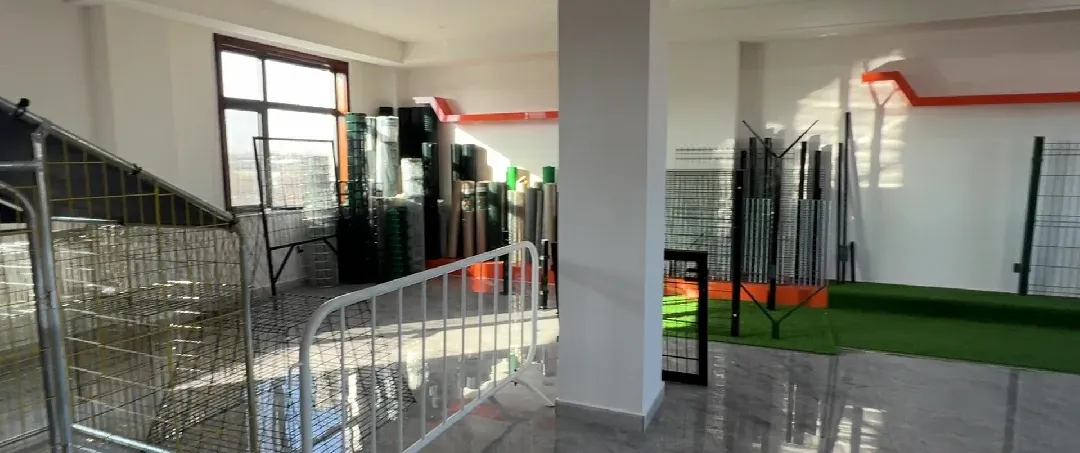welded wire mesh size
Understanding Welded Wire Mesh Sizes A Comprehensive Overview
Welded wire mesh is a versatile material commonly used in various construction and industrial applications. Its strength, durability, and flexibility make it a popular choice for a wide range of projects, from reinforcing concrete to forming enclosures for animals or gardens. One of the most critical factors to consider when selecting welded wire mesh is its size, which influences its performance and suitability for specific applications. In this article, we will explore the different aspects of welded wire mesh sizes, including dimensions, spacing, and their practical implications.
What is Welded Wire Mesh?
Welded wire mesh consists of a grid of wires that are welded at their intersection points. This creates a strong, integrated structure that offers numerous advantages over traditional materials. The mesh typically comes in sheets or rolls and can be made from various materials, including steel, stainless steel, and galvanized wire, to suit different environments and applications.
Dimensions of Welded Wire Mesh
The size of welded wire mesh is often described in terms of its gauge (thickness) and the dimensions of the openings. The gauge of the wire affects the mesh's strength and flexibility; common wire gauges range from 8 (thicker) to 18 (thinner). Thicker wires provide greater strength and are suitable for heavy-duty applications, while thinner wires may be adequate for lighter projects.
The opening size refers to the distance between the wires in the mesh. Opening sizes can vary significantly, typically ranging from 1 inch to 6 inches, depending on the intended use. Smaller openings are often used in applications where animals or smaller objects need to be contained, while larger openings can be found in applications that require airflow or visibility, such as fencing for gardens or decorative purposes.
Choosing the Right Size for Your Project
welded wire mesh size

When selecting welded wire mesh, there are several factors to consider based on the size
1. Application The first step is to identify the purpose of the mesh. For instance, if you are using it for concrete reinforcement, you may need a heavier gauge with smaller openings to provide adequate support. For fencing, a lighter gauge may be sufficient, depending on the size of the animals or objects to be contained.
2. Load-Bearing Requirements In applications where the mesh must bear weight, such as in flooring or ceilings, thicker wires are essential to ensure safety and structural integrity. On the other hand, if the mesh is used for non-load-bearing applications, a lighter gauge may suffice.
3. Environmental Conditions Consider the environment where the mesh will be used. In areas exposed to moisture, such as basements or outdoor projects, galvanized wire or stainless steel options will resist rust and corrosion better than regular steel.
4. Aesthetic Considerations If the mesh is intended for decorative purposes, its size and appearance may play a significant role in your choice. A finer mesh can provide a more delicate look, while larger openings may offer a more robust industrial aesthetic.
Conclusion
Welded wire mesh is an indispensable material in construction and beyond, offering a reliable solution for various applications. Understanding the sizes available and their implications can significantly impact the effectiveness of your project. By assessing your specific needs—like gauge, opening size, load-bearing requirements, and environmental factors—you can make an informed choice that ensures longevity and performance. Whether you are reinforcing concrete, creating animal enclosures, or building decorative fences, selecting the right size of welded wire mesh is crucial to achieving your desired outcomes.
-
Space-Saving Chain Fence Hacks Vertical Gardening with Cyclone MeshNewsJul.16,2025
-
Innovations in Iron Nail Wire Production for Modern ConstructionNewsJul.16,2025
-
Creative Uses of Wire Netting Fence in Modern Landscape DesignNewsJul.16,2025
-
Barbed Wire Fence Innovations in Anti-Climb TechnologyNewsJul.16,2025
-
Architectural Uses of Umbrella Nails for Aesthetic Roof DesignsNewsJul.16,2025
-
Architectural Uses of Razor Barbed Wire in Secure Urban DesignNewsJul.16,2025




